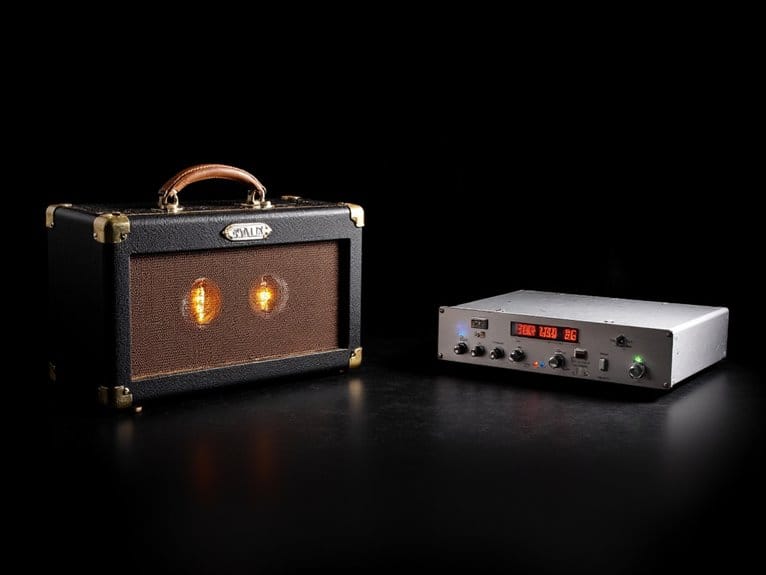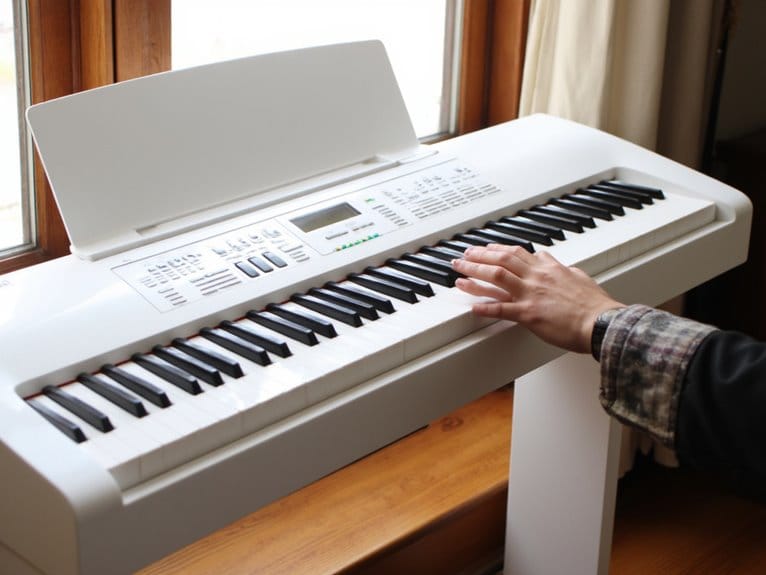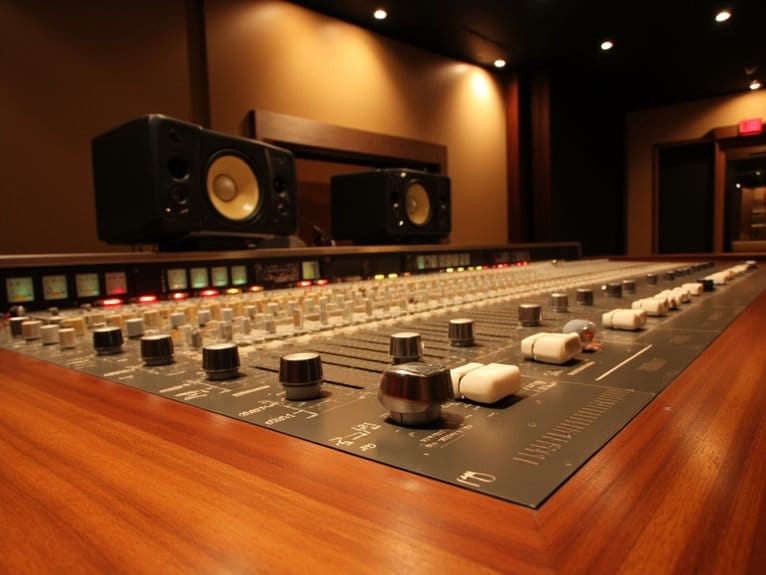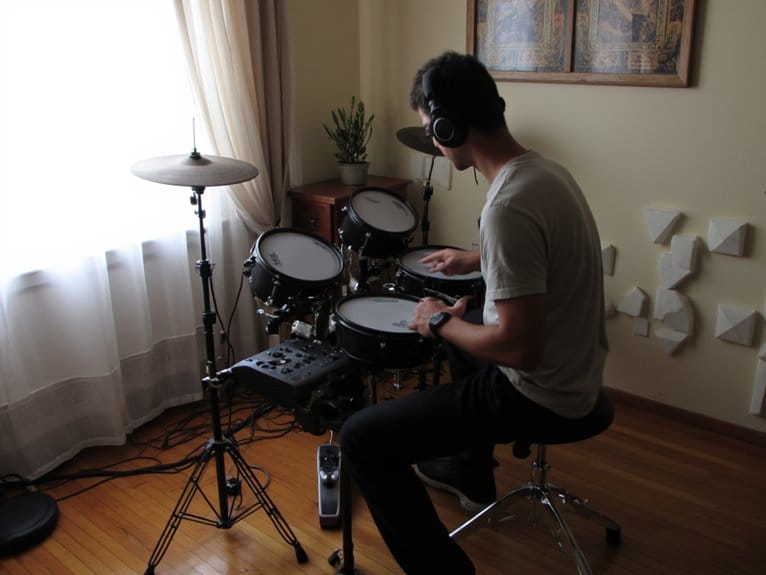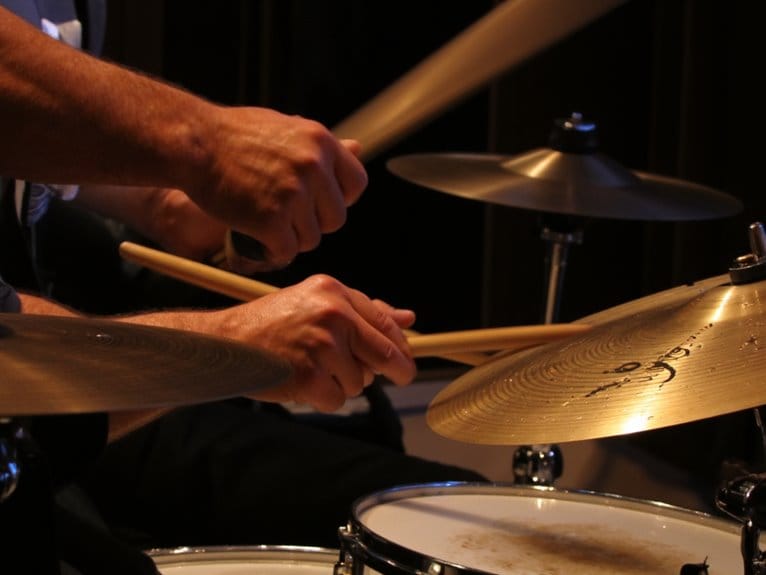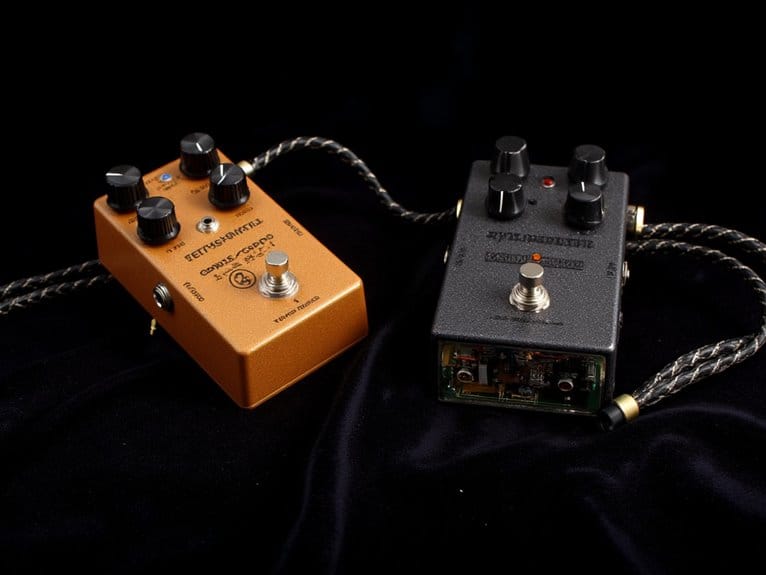Vintage Vs Modern Guitar Amplifiers: Character Differences
When you plug into a vintage tube amp, you’ll experience warm, organic compression with rich harmonic complexity that responds dynamically to your playing intensity, while modern amplifiers deliver surgical clarity, tight low-end control, and consistent performance that cuts through dense mixes. Vintage circuits use point-to-point wiring with carbon composition resistors creating that coveted “soft” feel, whereas contemporary designs employ printed circuit boards for reliability and precision. Understanding these fundamental differences will help you choose the right amplifier for your musical goals.
We are supported by our audience. When you purchase through links on our site, we may earn an affiliate commission, at no extra cost for you. Learn more.
Notable Insights
- Vintage amplifiers produce warm, organic tones with complex harmonics through tube technology, while modern amps emphasize clarity and tightness.
- Vintage amps use point-to-point wiring with carbon resistors and paper capacitors; modern amps employ printed circuit boards with standardized components.
- Vintage circuits offer organic, musical compression that responds to playing intensity; modern designs provide controlled, precise compression maintaining clarity.
- Vintage amps excel in blues, jazz, and classic rock genres; modern amps dominate metal and progressive music with tight articulation.
- Vintage amplifiers require higher maintenance with tube replacements and specialized repairs; modern amps offer greater reliability and predictable servicing.
Tonal Character and Sound Signature
The heart of any amplifier debate lies in its tonal DNA, and I’ve spent countless hours comparing how vintage and modern amps shape your guitar’s voice in fundamentally different ways.
Vintage amplifiers deliver tonal warmth that stems from tube technology and original component choices, creating rich, complex harmonics that evolve dynamically with your playing intensity. You’ll notice this organic feel immediately when you dig into the strings. The rawer sound quality of vintage circuits often comes with a higher noise floor, but many players consider this an acceptable trade-off for the enhanced character. These older circuits typically require you to reduce bass when increasing gain to maintain optimal clarity.
Modern amps, conversely, emphasize clarity and tightness with focused midrange response, though they often lack the natural variability that makes vintage amps so enthralling. Modern designs often feature multiple channel configurations that allow seamless switching between clean and overdriven tones during performance. Solid-state amps provide reliability with cleaner sounds and are more durable for budget-conscious players seeking consistent performance. Additionally, many musicians appreciate the versatility of combo guitar amps, which integrate an amplifier and speaker in a single unit, making them ideal for practice and performance alike. These compact setups often come equipped with built-in effects, allowing players to experiment with their sound without needing extensive additional equipment. As a result, combo guitar amps are a popular choice for both amateur and professional guitarists who need portability without sacrificing tone quality.
While digital modeling attempts to recreate vintage warmth, the harmonic complexity and musical “break up” characteristics of older circuits remain distinctively different from today’s consistent saturation approaches.
Circuit Construction and Component Quality
While tonal character captures our ears, the underlying circuit construction and component quality determine whether that magic happens consistently night after night, and I’ve learned that these foundational differences between vintage and modern amps often explain why certain amplifiers develop legendary reputations.
You’ll find vintage amps employ point-to-point wiring and turret board construction, creating direct signal paths that many guitarists swear enhance tone clarity. Modern amplifiers utilize printed circuit boards for consistency and efficiency. The circuit topology differences extend to component sourcing-vintage amps feature carbon composition resistors and paper-in-oil capacitors, while modern designs use standardized metal film resistors and ceramic capacitors.
| Aspect | Vintage Amps | Modern Amps |
|---|---|---|
| Construction | Point-to-point/turret board | Printed circuit boards |
| Resistors | Carbon composition | Metal film |
| Capacitors | Paper-in-oil | Ceramic/polypropylene |
| Assembly | Hand-soldered | Wave/reflow soldering |
| Tolerances | Wider variations | Tight consistency |
Gain Structure and Dynamic Response
When you’re comparing vintage and modern amplifiers, you’ll notice that the gain structure fundamentally changes how your guitar responds to your playing technique, particularly in how each design handles natural compression and attack precision.
I’ve found that vintage amps typically compress your signal in a more organic way through tube rectification and simpler gain stages, while modern high-gain designs often deliver tighter, more controlled compression that can mask subtle playing dynamics.
Your picking attack will translate differently through each system, with vintage circuits generally providing more expressive touch sensitivity and modern amps offering greater consistency and precision at higher gain levels.
For beginners exploring these differences, starting with a 10-watt amplifier can help you understand how gain structure affects your playing dynamics without overwhelming volume levels.
Natural Compression Differences
As someone who’s spent countless hours comparing vintage and modern amplifiers in my studio, I’ve noticed that natural compression represents one of the most significant sonic differences between these two eras of amp design.
The compression evolution between vintage tube circuits and modern solid-state components fundamentally changes how your guitar responds to playing dynamics, creating distinctly different musical experiences.
Vintage amps deliver compression through tube saturation and power supply sag, producing that coveted “soft” and musical feel that responds organically to your picking intensity.
Modern amplifiers, however, employ solid-state rectification and precise gain staging to create tighter, more controlled compression that maintains clarity even at extreme gain levels. This technology is particularly beneficial for applications like a clean guitar amp, where maintaining the integrity of the sound is paramount. Musicians can achieve a wide dynamic range without sacrificing fidelity, allowing for expressive performances that capture every nuance. Additionally, the implementation of sophisticated digital signaling further enhances the versatility and responsiveness of these amplifiers. This development has led to a growing interest in guitar amplifier upgrade options, as musicians seek to enhance their tone and performance capabilities. By integrating advanced features such as programmable effects and dynamic EQ, players can tailor their sound more precisely to their individual style. As technology continues to evolve, the possibilities for customization and enhanced audio quality in amplification are becoming more accessible than ever.
- Vintage compression breathes with your playing style
- Modern compression maintains consistent note definition
- Each approach serves different musical applications
Attack Precision Variations
The transient response between vintage and modern amplifiers reveals perhaps the most dramatic difference in how your guitar’s initial attack translates through the signal chain, fundamentally altering the feel and articulation of every note you play. Your vintage amp’s tube rectifiers and lower filter capacitances create that coveted “sag,” where attack sensitivity becomes more forgiving and musical, allowing natural compression to soften each note’s onset. Modern amps, with their solid-state rectifiers and higher capacitances, deliver razor-sharp transient shaping that responds immediately to your picking dynamics. Understanding these attack characteristics becomes crucial when selecting cardioid pickup patterns for microphones that will accurately capture and translate your amplifier’s unique transient response to the audience. Professional monitoring through studio headphones during recording sessions allows engineers to precisely evaluate how these transient differences translate in the mix.
| Characteristic | Vintage Amps | Modern Amps |
|---|---|---|
| Attack Feel | Rounded, forgiving | Sharp, defined |
| Transient Speed | Gradual with sag | Immediate response |
| Dynamic Headroom | Wide, natural give | Compressed, consistent |
This fundamental difference affects everything from chord voicings to lead articulation.
Speaker Technology and Cabinet Design
Magnets define everything about how your guitar amp’s speakers respond, and I’ve noticed that vintage versus modern approaches couldn’t be more different in their fundamental philosophies.
Vintage amps rely on alnico magnet speakers for warm, naturally compressed tones, while modern designs favor ceramic magnets that deliver brighter articulation and higher power handling capabilities.
Speaker evolution transformed guitar amplification from limited radio horn designs to sophisticated cone configurations that revolutionized sound projection.
Your vintage amp’s smaller speakers and natural paper cones create midrange-focused breakup characteristics, whereas modern multi-speaker configurations prioritize frequency extension and headroom.
- Open-back vintage cabinets produce spacious, ambient effects perfect for blues authenticity.
- Closed-back modern designs deliver punchy directionality that cuts through live mixes.
- Cabinet materials range from resonant vintage pine to structurally rigid modern composites.
Maintenance Requirements and Part Availability
When you’re weighing vintage versus modern amplifiers, I’ve learned that maintenance demands become one of the most significant factors in your long-term ownership experience, often determining whether that dream amp remains a reliable musical partner or transforms into an expensive workshop queen.
Vintage tube amps require tube replacements every 1-3 years, periodic biasing adjustments, and specialized components that are increasingly scarce through specialized suppliers. The maintenance procedures involve complex tube circuit knowledge, while repair complexity escalates when sourcing vintage transformers or capacitors from salvaged units.
Vintage tube amps demand specialized knowledge and scarce components, creating escalating repair complexity that challenges even experienced technicians.
Modern solid-state amps offer standardized, mass-produced components with manufacturer support, requiring mainly routine cleaning and occasional capacitor checks.
Though vintage restoration increases resale value, you’ll face higher cumulative costs versus modern amps’ user-friendly diagnostics and lower maintenance expenses.
Musical Genre Applications and Player Preferences
Beyond maintenance considerations, I’ve discovered that your musical style fundamentally shapes whether vintage or modern amplifiers will serve your creative vision. For instance, if your sound leans towards classic rock, vintage amplifiers can enhance that warm, nostalgic tone. Conversely, if you favor contemporary styles that thrive on versatility and clarity, modern amplifiers might be more suitable. Ultimately, matching amplifiers to your guitar ensures that the unique qualities of both instruments complement each other, resulting in a harmonious blend that aligns with your artistic expression.
Each camp offers distinct sonic characteristics that either complement or clash with specific genres and playing approaches.
Vintage amplifiers excel in blues, jazz, and classic rock through their warm midrange focus and natural compression, while modern designs dominate metal and progressive genres with tight low-end articulation and high-gain capabilities.
Player demographics reveal interesting patterns, with studio musicians often choosing vintage for authentic tones, whereas touring professionals prefer modern reliability and feature sets.
Similar to how affordable audio interfaces now offer professional-grade preamps that rival expensive models, modern amplifiers have significantly closed the gap with vintage counterparts in terms of sound quality.
Understanding your wattage requirements helps determine whether you need the natural tube saturation of lower-powered vintage amps or the clean headroom of modern high-wattage designs.
Three emotional considerations when choosing your amplifier:
- Legacy connection – Vintage amps link you to guitar heroes
- Creative flexibility – Modern genre diversity demands versatile tools
- Personal expression – Your tone reflects musical identity
Investment Value and Long-Term Ownership Costs
While sound quality drives most purchasing decisions, I’ve learned that understanding the financial implications of amplifier ownership can greatly impact your long-term satisfaction, especially when you’re investing thousands of dollars in gear that’ll either appreciate like a fine wine or depreciate faster than a new car.
| Factor | Vintage Amps | Modern Amps |
|---|---|---|
| Initial Cost | Higher upfront investment | More affordable entry point |
| Depreciation Rates | Potential appreciation over decades | Immediate 40% value drop |
| Maintenance Costs | Expensive, specialized repairs needed | Lower, standardized service costs |
| Resale Value | Market-dependent, sometimes illiquid | Quick turnover, predictable pricing |
Vintage amplifiers require premium budgets but offer investment potential, while modern amps provide reliability with inevitable depreciation, making your choice dependent on whether you’re collecting or simply playing music. For those on tighter budgets, the market for quality tube amplifiers under $500 has expanded significantly, offering authentic vacuum tube warmth without the premium price tag of vintage collectibles. Budget-conscious players can find excellent options like the Fender Champion 20 with built-in effects, proving that solid performance doesn’t always require vintage pricing.
Frequently Asked Questions
Can Modern Amps Achieve Authentic Vintage Tone With Tube Saturation Plugins?
You can achieve impressive results with high-quality tube saturation plugins, but they won’t fully replicate authentic sound. Plugin quality has improved dramatically, though vintage amps’ organic unpredictability and tactile response remain unmatched.
Do Humidity and Temperature Changes Affect Vintage Versus Modern Amplifier Performance?
You’ll notice humidity effects impact vintage amps more severely since older materials absorb moisture and corrode faster. Temperature stability matters less for modern solid-state amps compared to vintage tube amplifiers with fragile glass envelopes.
On a final note
You’ll find that choosing between vintage and modern amplifiers ultimately comes down to your musical priorities, budget constraints, and tolerance for maintenance challenges. While vintage amps offer irreplaceable tonal character and potential investment value, modern designs provide reliability, versatility, and consistent performance that many players prefer. Consider your specific needs, playing style, and long-term goals before making this significant investment decision.

